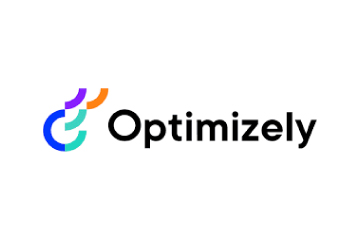Charting the Future of Banking: The Power Trio of AI, ML, Data
Rahul Otawat, Vice President, Strategy, Analytics & Data Science - Wealth, Neobiz & Business Banking - Mashreq Bank discusses the value of data analytics to understand banking customers.
Rahul Otawat, Vice President, Strategy, Analytics & Data Science - Wealth, Neobiz & Business Banking - Mashreq Bank discusses the value of data analytics to understand banking customers.


Achieving customer centricity has become a pivotal factor for success in the banking industry. “Customer centricity is a crucial aspect of banking that focuses on providing a personalised experience to customers. It requires banks to re-evaluate what they know about their customers and to better understand who their
customers are, what interests them, what they value and what drives them,” said Rahul Otawat, Vice President, Strategy, Analytics & Data Science – Wealth, Neobiz & Business Banking – Mashreq Bank.
Customers’ expectations for conventional banks and challenger banks (digital banks) differ significantly. Customers look to digital banks for innovation, expecting a wide range of inventive financial products and customisation options. These distinctions reflect customers’ evolving preferences in an increasingly digital and cost-conscious banking landscape.
“Studies have shown that customer’s expectations from conventional banks are factors like transparency, reduced cost/charges of products and services, and improved customer support services, which are at times overlooked by retail banks. Challenger banks, on the other hand, prioritise an improved user experience, appealing to those who want to be able to bank from their phones instead of visiting a retail location. They offer user-friendly interfaces and low fees. However, they might not offer a wide range of services and products like traditional banks do.”
For instance, Mashreq Bank focuses on data for decision making. It is one of the top leaders in MENA for the usage of data science and analytics within the BFSI domain. “AI is changing the way the world works, and banks are no different to that. We move forward in exploring the usage of conversational AI, blockchain, and NLP Models to drive best in class customer experience and be the best bank in the region,” said Otawat.
A growing trend is the integration of cutting-edge technologies like AI and ML, and advanced analytics to gain insights into customer preferences and requirements. Through the analysis of data from a myriad of interaction points, spanning websites, mobile applications, social networks, digital transactions, and even in-person branch visits, banks can anticipate customer needs proactively, leading to the delivery of highly customised experiences.
Predictive modelling techniques and algorithms have emerged as indispensable tools for anticipating customer needs and behaviours. Among these, a few have demonstrated exceptional effectiveness. ML algorithms, such as decision trees, random forests, and gradient boosting, have excelled in identifying patterns within vast datasets, enabling banks to make more accurate predictions about customer preferences and actions.
According to Otawat, there are four significant techniques:
Furthermore, neural networks, a subset of deep learning, have been instrumental in processing complex, unstructured data from sources like social media and web activity, providing valuable insights into customer sentiment and behaviour.
These predictive tools empower banks to proactively offer the right products and services, ultimately improving customer satisfaction and loyalty in an increasingly competitive financial landscape.
AI/ML plays a significant role in identifying opportunities in the wealth management space as well. “It enables banks to provide specific recommendations about investment strategies, analyse portfolios, change asset allocations and offer other proactive support based on customer’s investment goals and risk profile. Potential risks can also be detected by analysing data from various sources such as financial statements, credit reports, transactional data, etc., to unearth patterns and anomalies that may indicate fraudulent activities or other risks,” said Otawat.
The adoption of conversational AI, which employs ML algorithms to enable human-like interactions between individuals and machines, holds the promise of revolutionising the manner in which banks engage with their clientele. Otawat believes that this innovative technology’s capacity to offer tailored and convenient services, marks a pivotal transformation in the banking and financial services sector.
This shift is propelled by the growing appetite for personalised and streamlined services and the advancing capabilities of AI technologies. “Conversational AI can help banks provide a seamless and convenient way for customers to interact with their financial institutions, eliminating the need for in-person visits. It enables users to perform tasks such as checking their account balances, making payments, and managing their finances, using simple voice commands or chatbots.”
This journey towards enhanced customer experiences, made possible by AI technologies, is setting the stage for the future of banking in the Middle East and beyond. As the industry continues to evolve, staying at the forefront of technological innovation will be the key to success for banks striving to meet the diverse expectations of their customers in a rapidly changing financial landscape.
Catch Rahul Otawat speaking at the CX NXT Summit, at Address Dubai Marina, Dubai on 15 and 16 November.
Chandni is an Editor with a keen interest in customer-obsessed ideas. A journalist by profession and a writer at heart, she is committed to martech and CX content that resonates with readers across industries.
View More

Blue Prism is a global software provider, offering ROM 2, an intelligent automation implementation methodology that empowers teams to scale their digital workflow. One of its use cases is sales and marketing solutions, which is powered by artificial intelligence (AI) and machine learning (ML) algorithms.

Pega is a combined business process management and robotic process automation (RPA) platform that comes with workforce analytics features. It offers a wide variety of tools such as Pega Email Bot to automate repetitive tasks with personalised customer replies at scale.

EdgeVerve, a subsidiary of India-based IT company Infosys Technologies, offers RPA software for major enterprise companies. Its AssistEdge Robotic Process Automation provides machine learning and AI tools called Infosys Nia. Its AssistEdge RPA enables global marketing and distribution companies to automate 970+ manual tasks at scale.

Clevertap is a comprehensive platform that allows global marketers to get unified customer data analytics and omnichannel engagement in one place.


UseResponse is a fully customisable customer support and feedback software, helping companies to better understand the needs of their customers. It provides the capabilities of multichannel ticketing, live chat with messengers aggregator, chatbot, feedback community portal, and knowledge base.


Survicate is a drag-and-drop, multichannel survey builder, helping brands effortlessly collect and analyse customer feedback. It offers 23+ one-click, native integrations, enabling advertisers and marketers to create follow-up campaigns based on real-time customer feedback.


SAP Sales Cloud comes with end-to-end solutions and offers AI-fueled insights for understanding customers’ preferences. It helps build customer profiles at scale. It also empowers users to automatically manage contact information, which streamlines clients’ journeys.


Freshsales by Freshworks is an AI-powered software that streamlines the sales cycle by automating mundane tasks and personalising customer engagement. It generates quality leads and nurtures relationships by understanding visitor intent in real-time.


Developed for midsize enterprises and large organisations, Creatio offers end-to-end CRM software solutions, allowing users to manage sales, marketing, and services all in one place. For marketing professionals, it provides Marketing Creatio, an omnichannel marketing platform to orchestrate customer journeys and accelerate lead-to-revenue.



Salesforce is a global technology provider, offering low code/no-code, AI-powered capabilities. Marketers and advertisers can harness its technologies for multiple use cases like B2B strategies, cross-channel personalisation, real-time analytics, and more.


SAS offers embedded CDP capabilities, letting marketers unify customer data, understand digital activity and enable analytically driven, real-time activation. It comes with data activation facility that enables marketers to pull only the data they want, further reducing data migration costs.


Blueshift is a scalable CDP platform that offers AI-driven capabilities for clubbing real-time events with related data from various sources. It streamlines these insights into unified customer profiles, enabling marketers to automatically personalise their targeting goals.


Wotnot is a genAI-powered, no-code chatbot platform, helping the sales and marketing team to engage with visitors on their website via personalised conversations, catering to their lead-generation goals. It offers platform-based solutions, such as AI Studio, a GPT chatbot builder, and an analytics dashboard.


Aisera is a generative AI platform provider that offers AI Copilot, AiseraGPT, and AiseraLLM for various domains. With Aisera, enterprises can accelerate the development of their LLMs or purchase ready-to-use generative AI solutions with pre-trained LLMs using customer data to reduce hallucinations.


Deliotte offers Ncyte, an all-in-one analytics solution. Utilising patented algorithms, proprietary data models and predictive analytics, Ncyte delivers actionable insights for various marketing functions. With Nycte, data and marketing teams can pre-define events such as attributed campaign performance to evaluate their efforts with live notifications.



CleverTap is a customer engagement and retention platform that offers the functionality to integrate app analytics and marketing. Powered by TesseractDB, a purpose-built database for engagement & retention, it combines the features of audience analytics, omnichannel engagement, and product A/B testing for marketing functions.




Oracle Advertising and Customer Experience (CX), lets advertisers personalise their campaigns. Its flagship product, Oracle Moat, a comprehensive analytics and measurement platform, provides a suite of solutions across marketing and ad intelligence. Moat helps reach prospective customers, capture consumer attention, and measure the outcomes to unlock business potential.



Meta Ads is a social media advertising platform leveraging the user base from Facebook, Instagram and Whatsapp to deliver personalised ads at scale. It offers Meta Business Suite and Meta Business Manager for managing and tracking ad performance. Utilising its AI-powered tools, advertisers can partially or fully automate with complete control over their ads.


WebEngage is an end-to-end customer data platform, helping brands to strategise their customer engagement and retention functions. It supports third-party integration for use cases including customer segmentation, omnichannel engagement, and survey & feedback.


ServiceNow features Robotic Process Automation Hub (RPA Hub), a scalable genAI-powered platform for orchestrating and managing a robotic workforce to execute various business processes. Its workflow automation enables tasks like lead management and campaign execution and supports integration with popular marketing tools to streamline processes.


Tealium is a comprehesive customer data platform helping brands orchestrate and manage their data activation from a marketing standpoint. Its AudienceStream CDP functionality enables marketers to create custom campaigns via 1300+ integration options for several use cases.


Qualaroo is a saas-based online survey creator offering Qualaroo Nudge, a proprietary technology for uploading custom properties for airtight targeting. It enables marketers to ‘nudge’ when user clicks on a page element, helping them to target visitors on their real-time activity.




Zendesk is a Danish-American company that offers software-as-a-service products with the capabilities of omnichannel integrations. Its omnichannel messaging platform enables sales and marketing teams to easily track and consolidate customer tickets from various sources, ensuring enhanced customer experiences.


WebEngage is an all-in-one marketing platform that integrates omnichannel engagement with live analytics features. It offers AI/ML-driven product recommendations engine that enables marketers to boost conversion for all channels, including the web and mobile apps.



Sprinklr is a comprehensive enterprise software company offering omnichannel support capabilities for all customer-focused marketing functions. It provides no-code, easy-to-build API integrations to access real-time customer data from multiple sources — such as CRM, CDP and ecommerce platforms.




SAP provides omnichannel marketing capabilities through its flagship product: SAP Emarsys. By accessing its purpose-built reports, teams can determine the effectiveness of their marketing campaigns, segments, and channels in achieving sales goals. Its B2B account engagement features let brands deliver predictable and personalised marketing-led B2B insights at scale.



MoEngage is a global AI-driven marketing platform that enables brands to orchestrate omnichannel campaigns from a single intuitive interface. Utilising MoEngage’s User Path Analysis capabilities, marketing teams can target customers across 10+ channels, depending on their purchase behaviour.


Intuit Mailchimp is an AI-powered omnichannel platform that offers email and marketing automation functions. With its customised pre-built audience segments, marketers can scale their campaigns based on individual contacts’ demographic information and shopping behaviour.




Hubspot is a cloud-based, scalable customer platform that offers various marketing automation solutions with omnichannel support capabilities. It enables marketers to create omnichannel campaigns to connect and interact with customers across multiple channels in real-time.



Bloomreach is an all-inclusive marketing automation platform that comes with omnichannel orchestration supports for various use cases, such as marketing campaign personalisation, and headless CMS commerce platform experience.


Agillic specialises in offering global brands a comprehensive Omnichannel Marketing Automation Platform that enables them to create personalised marketing campaigns. Its multichannel marketing capabilities support multiple integrations, such as Playable and Sleeknote for lead generation, Zapier for automating routine processes, among others.





Adobe Experience Cloud features Adobe Campaign, enabling marketers to synchronise their customer data from various channels for omnichannel marketing. By leveraging its omnichannel integration with Adobe Journey Optimiser, brands can build multi-step journeys, campaigns, and personalised real-time moments that follow their customers across channels.


ActiveCampaign is an intelligent multichannel marketing automation platform that enables marketers to seamlessly connect campaigns across the channels that matter most to them. It helps enterprises streamline personalised marketing, transactional emails, and one-to-one CRM interactions throughout the customer lifecycle.


UiPath offers a comprehensive AI-powered robotic automation platform, enabling marketers to streamline recurring functions, such as lead automation and customer engagement. Utilising its capabilities, marketers can personalise and automate customer interactions, depending on their needs and preferences.




SAP is a composable marketing automation technology provider, offering SAP Intelligent RPA solutions to automate repetitive, rules-based business processes, including marketing and sales. Using its tech stack, marketers can automatically extract product data from manufacturers’ websites, update online inventory and import website and email sales.


Microsoft offers Power Automate, a low-code and AI-powered RPA software that helps marketers streamline tasks like lead management, email campaigns, social media management, data analysis, content publishing, and customer feedback. Leveraging its capabilities, businesses can automate repetitive tasks, such as lead capture and email marketing workflows.


IBM offers AI-powered Robotic Process Automation capabilities for CRM and marketing functions. It enables users to automate workflows with integrated OCR and intelligent chatbots, distribute work across multiple bots without human interventions and manage emails via low-code authoring tools.


Hyland offers an AI-powered comprehensive robotic automation software suite, enabling marketers’ teams to automate their campaigns. Its Natural Language Processing (NLP) technology allows businesses to automate repetitive marketing functions, such as execution of targeted and personalised strategies in near real-time.


Datamatics is an intelligent automation platform, offering TruBot RPA designer, a low-code bot design tool for marketing teams to create customised bots quickly. It provides 500 pre-built components, enabling low-code design and rapid deployment capabilities with drag-and-drop options.


Automation Anywhere offers Automation Success Platform powered by Vertex AI, enabling enterprises to develop a cloud-based digital workforce at scale. Leveraging its bots, ML, and AI technologies, marketers can automate their marketing and sales processes. One of its popular offerings is Automation Co-Pilot, a genAI-powered assistant that empowers businesses to create and summarise content.


Appian is a global technology provider, delivering end-to-end process automation with RPA, AI, IDP and API integrations. Utilising the readily available APIs of this low-code platform, teams can create a series of connected digital business applications including customer management and marketing.


Powered by Zoho Corporation, Zoho Analytics enables marketers to track all critical metrics in a single platform to enhance marketing outcomes. The company offers 75 pre-built data visualisation reports and dashboards on marketing performance for collaborative analysis. With its AI-powered assistant, marketers can generate automated insights, predict future trends, and configure smart alerts.


Semrush is an online visibility management and content marketing SaaS platform, offering marketing analytics tools to global businesses. Its open-source analytical tools include Market Explorer and Traffic Analytics for understanding market trends and website traffic respectively.



Nielsen is a global audience insights, data and analytics solution provider, helping marketers measure what people listen to and watch. It offers a comprehensive, AI-powered Nielsen Marketing Cloud platform with sub-products such as Audience Segments, Scarborough, and Advanced Audiences to understand audiences for different targeting initiatives.



MoEngage is a full-stack marketing automation platform, offering consumer insights and analytics solutions for marketers to understand customer LTV. With MoEngage Analytics, they can measure user engagement, spot behavioural patterns, and act on retention to prevent app uninstalls.


Microsoft Clarity is a behavioural analysis tool that helps marketers understand user interaction with their website. It supports features like Session recordings, Heatmaps, and ML insights in real time. Processing more than a petabyte of data from over 100 million users per month, Clarity accommodates limitless traffic for various marketing measurements at scale.


Powered by AI-led insights, Merkle offers scalable marketing analytics and CX technology solutions, helping brands to optimise their campaigns. Some of its flagship solutions are Measurement & Media analytics, Consumer & Experience insights, and Product & Market intelligence.




Hubspot offers marketing analytics and dashboard software, enabling businesses to make data-backed decisions for use cases, such as revenue generation, site analytics and detailed reporting. Leveraging the capabilities of its multi-touch revenue attribution model, marketers can monitor real-time website traffic via unique tracking codes.


Google Analytics is an open-source analytics tool by Google, enabling marketing teams within organisations to better understand their customers via valuable insights. Consequently, businesses can use those insights to take action, such as website improvement and tailored audience list creation.


Adverity is an integrated data analytics platform, enabling marketers to automate their customer’s data integration and visualisation functions. It offers 600+ pre-built data connectors to popular marketing platforms, social media networks, SEO tools, and marketing automation solutions. The platform also provides pre-build dashboards to generate tailored reports.





Adobe Experience Cloud offers Adobe Analytics and Adobe Target within its analytics tools solutions, enabling marketers to execute in-depth analysis of their customer data. Adobe Analytics allows the sales and marketing teams to mix, match, and analyse data from any digital point in the customer journey.


Ahrefs features a suite of analytics tools under its Ahref Enterprise offering. It offers API and Looker Studio connectors, enabling marketing teams to elevate their SEO strategy with enterprise-grade and insights. Some of the criteria for its API endpoints include Backlinks, Organic & Paid Traffic, SERPs, Website health score and more.


StackAdapt is a multi-channel programmatic advertising platform, enabling digital marketers to customise their strategy. It offers open and flexible DSP (Digital Signal Processing) capabilities for executing tailored ad campaigns. Furthermore, its ad previewer lets marketing teams preview video, display and native ads on desktop or mobile across 500+ publishers, covering 23 verticals.


Rakuten is a global affiliate ad technology company, enabling advertisers to optimise their marketing strategies with data-driven insights. It offers AI-powered forecasting and benchmarking capabilities and dynamic multi-touch commissioning tools, allowing advertisers to customise their campaigns. It also supports first-party data collection integrations for both B2B and B2C marketers.



Nielsen offers Nielsen Ad Intel, a cross-platform advertising intelligence platform with actionable insights to identify prospects, analyse brand strategies and learn from past advertising campaigns. It offers various advertising intelligence features such as ad spend monitoring, competitive benchmarking, global competitive insights and expert data harmonisation.


Magnite is an independent sell-side advertising technology provider, enabling publishers to monetise their content across all screens and formats. It offers Magnite Streaming, a singular supply-side platform that merges technology from the Magnite CTV and SpotX platforms. Utilising this functionality, marketers can identify their potential audiences to restructure their targeting strategies.



IBM offers a comprehensive suite of Watson Advertising to agencies and marketers. With Watson Advertising’s AI-powered assistant, advertisers can customise their advertisements, based on real-time ad results. It also supports functionalities of cookieless advertising, ad fraud management and brand safety measurements.



Google features a comprehensive list of AI-powered Ad tools under its Google Ads offering. Some of its popular tools include Keywords Planner, Ads Editor, Reach Planner, Ads Mobile App, Insights Finder, Ads API, and Recommendations Page. Additionally, it offers Google AdMob to help businesses plan their in-app revenue generation strategy.


Criteo is an all-in-one connected commerce media platform, enabling marketers and agencies to scale their digital and physical assets. Leveraging the capabilities of its AI-powered technology, brands can develop strategies for intent-based product recommendations, multi-prolonged accessibility, contextual advertising, and more.


Basis Tecnologies (formerly known as Centro), is a programmatic advertising platform, offering ad management tools for search, social and site direct via a single interface. Its flagship products are Basis Assistant and Basis Automate+. Basis Assistant is a Chrome extension, connecting 20+ platforms and tools, and Basis Automate+ is a digital advertising automation tool for simplifying campaign process.


AppsFlyer is a mobile attribution company, helping mobile advertisers to identify their ad network. It offers a measurement suite, giving app marketers full visibility into their customer journeys while preserving their privacy. Utilising its AI-powered Creative Optimisation platform, marketers can formulate their creative strategy.


Adtriba is a cross-channel digital marketing management platform based on data-driven attribution modelling. Its solutions include Adtriba Triangulation, enabling advertisers to witness the integration of diverse measurement methods, such as Marketing Mix Modelling (MMM), Multi-Touch Attribution (MTA) and Incrementality Testing.





Adobe Experience Cloud offers connected advertising solutions with its natively integrated Adobe Advertising platform. Its consultancy-based reporting options come with AI-powered optimisation features, helping advertisers analyse their ad performance via 200+ measurement metrics. Utilising its connected TV (CTV) and search, social, and commerce tools, marketers can optimise their customer acquisition strategy.


Yellow.ai specialises in Conversational AI, generating autonomous conversations that appear human-like. These conversations form the foundation of brand engagement. Their AI-powered, no-code Dynamic Automation Platform manages around two billion conversations from a multitude of channels in numerous languages.


Sprinklr offers a comprehensive suite of 250+ AI-intent bot templates for various industry verticals to accelerate bot development. Its specialised AI and compliant rule engine enables marketers to modify and automate their promotional campaigns for better engagement via suggestion-based personalised bots.



Meta’s new class of generative AI features and creative tools allow users to create and share custom stickers or update the visual style of their photos with a simple text prompt. They can also chat with 28 different AIs and get unique perspectives on topics like travel, games and food.


Kore.ai is a UI-based platform that allows marketers to create a chatbot quickly and deploy it easily on multiple channels. Leveraging the capabilities of its conversational builder, enterprises can build the Dialogflow using dialogue messages. Some of its popular offerings include XO: Experience Optimisation and GALE(Beta).



IBM watsonx Assistant is an interactive virtual agent that utilises natural language and AI, enabling users to set it up on their app and website. It offers fast and accurate responses to customers, enhancing their overall experience and satisfaction with its adaptive learning capabilities.


Haptik helps enterprises manage their customer lifecycle with generative AI-powered conversational solutions to boost marketing and sales. It offers Contakt and Interakt to enhance overall CX, where Interakt enables marketers to send hyper-targeted and personalised campaigns to drive customers to take action on WhatsApp.



Dialogflow is an all-in-one platform for developing chatbots, voice bots, and virtual agents using natural language understanding and Google AI. It helps marketing teams create conversational agents that can handle common customer requests and issues, such as FAQs, and order status at scale.


Dialpad is a fully integrated unified conversation intelligence platform that utilises ongoing ML(Machine Learning) algorithms and does not require coding to configure a chatbot. It offers real-time insights and tips, helping marketing teams customise their approach for every customer.


Cognigy.AI is a low code-no code, enterprise-grade generative AI platform offering readily available LLMs for CX transformations. Its omnichannel reporting and analytics suite for marketing enables organisations to streamline their customer journeys.


boost.ai is a global conversational AI technology provider optimised for operational efficiency at scale. It offers self-learning AI capabilities that emphasise Natural Language Understanding (NLU) along with intent suggestions.


Avaamo is an all-in-one conversational AI platform for enterprises offering a suite of industry-specific skills developed to automate and resolve common use cases. It offers Outreach, which enables marketers to educate and engage with customers across existing touchpoints through proactive and personalised communication.


Amazon Lex offers fully managed conversational AI interfaces with advanced natural language models to design, build, test, and deploy conversational interfaces in applications. It enables sales and marketing teams to automate user tasks in their applications like the CRM and across any digital channel.




Zendesk is an AI-powered customer feedback software provider, offering customer satisfaction (CSAT) software to businesses across multiple industries. Its marketplace offers 1600+ apps and integrations, enabling marketers to create a complete customer feedback system.


UserVoice provides product feedback management software for SaaS businesses. Its UserVoice Validation tool delivers actionable user insights to inform roadmap strategy. From testing ideas to ensuring satisfaction with released features, it helps research and marketing teams gather quick user feedback throughout the entire product lifecycle.



Twilio provides integrated Mindful Feedback functionality within its Flex offering, enabling marketers to automatically take action based on real-time customer feedback. It automatically collects customer feedback after Flex interactions by capturing feedback over post-call voice IVR, outbound voice IVR, conversational SMS, Web SMS, email, and web surveys.


Trustpilot offers ML and AI-powered feedback management tools, helping marketers build trust and loyalty through customer reviews. Its AI-driven Review Insights tool enables marketers to identify growth areas from negative feedback, whereas its Image Generator tool lets them enhance social media engagement.





Sprinklr is a unified customer experience platform (CXM), offering AI-powered feedback management capabilities with its flagship product: Sprinklr Surveys. It integrates solicited customer feedback with unified-CXM data, enabling brands to derive meaningful, actionable insights. Utilising its genAI-powered survey builder, marketers can create conversational surveys to streamline their NPS strategies.



Salesforce is a comprehensive customer-oriented technology provider offering a feedback management suite. Salesforce’s survey responses help marketers create personalised surveys based on their existing customers’ data. Some of the supported applications of its feedback management platform are genAI-powered survey form development and sentiment-insights-based survey collections.


QuestionPro is an online feedback software provider, offering ready-made survey templates to businesses across 40+ countries. Leveraging the capabilities of its customer satisfaction templates, advertisers and marketers can create and gather tailored questions.


Qualtrics is an all-in-one customer experience solution provider, offering website & app feedback tools for organisations to collect customer feedback efficiently. Its digital experience analytics capabilities combined with DXA integrations, bring together verbal and behavioural data for in-depth analysis of user feedback.




HubSpot is a one-stop marketing platform, providing customer feedback software under its Service Hub offerings. Its pre-built APIs include net promote score (NPS), customer effort score (CES), and customer satisfaction (CSAT) surveys, allowing marketers to strengthen their customer loyalty strategy.


Medallia is a comprehensive platform, enabling marketers to capture feedback from all customer touch points. Some of its popular feedback management software capabilities include Sense360 for analysing consumer spending, Medallia Video to automatically extract meaningful insights from customer’s feedbacks and Agile Research for creating branded surveys in real-time.


Zeotap lets brands integrate, unify, segment and orchestrate customer data, fostering a cookieless future. It offers a “Non-Customer Entity Data” feature that helps marketers to integrate both customer and non-customer entity data.



Twilio provides, Twilio Segment, an AI-powered CDP, enabling marketers to streamline their personalised customer engagement journeys. It brings together clean, consented customer data for real-time insights with 450+ pre-built connectors.


Syntasa provides data-ready CDP capabilities, equipping marketers with essential tools to prepare their customer data. It offers real-time sentiment analytics capabilities, helping enterprises derive behavioural insights from unified user profiles to foster hyper-personalised experiences.




SAP is a company-wide customer data management platform, helping marketers improve engagement, conversion, and retention. It offers a genAI-powered data model, enabling enterprises to unify their B2B and B2C customers’ profiles to reach their personalisation goals.




Oracle is a global database management company, providing CDP solutions, under its flagship product: Oracle Unity. Its AI-powered models enable marketers to create hyper-personsalised campaigns with predictive insights by streamlining real-time customer data from heterogeneous sources.


Growthloop is a composable CDP platform, allowing marketing and sales team to action their data at scale. It offers GrowthLoop Audience Builder, enabling marketers to initiate their lead generation functions.


Adobe Experience Cloud offers a real-time CDP, letting users create high-value audience segments for B2C and B2B use cases across their marketing funnel. It follows a cookieless marketing approach to automatically unify customer data across various online and offline channels in real-time.


ActionIQ is a composable CDP platform that offers audience segmentation, acquisition marketing, and Customer 360 capabilities. It integrates analytical tools, enabling marketers to collect and analyse their first-party customer data at scale.


Zoho CRM leverages automation and comprehensive analytics to empower any sales team, fostering stronger customer loyalty. Ideal for both small businesses and enterprises, this software enables enhanced productivity and tailored solutions through predictive intelligence.




Zendesk offers Zendesk Sell, an easy-to-deploy CRM platform that is simple to deploy and navigate, catering to businesses of any scale. Its mobile-friendly Sell app has the functionalities of geolocation, helping sales and marketing teams. Offering an all-in-one CRM platform, organisations can implement use cases like prospecting, engagement, lead generation and communication capabilities.


SugarCRM is a global CRM software provider, helping marketing, sales, and service teams improve efficiency through automation, data, and intelligence in near real-time. It offers Sugar Market, an all-in-one marketing automation platform that helps marketers to automate their campaign with higher ROI.


Salesforce is a one-stop sales and support CRM software that regularly updates customer records, tracks emails and calls, and creates organised support processes for quicker customer responses. Its simple and scalable infrastructure is ideal for businesses of all sizes.


Pipedrive stands out with its emphasis on automation, tailorability, and seamless integration. Purposefully built to enhance the efficiency and productivity of sales professionals, this CRM solution has an intuitive setup and robust capabilities. It facilitates lead generation, comprehensive sales analytics, and seamless business expansion.


Oracle NetSuite CRM, a component of Oracle’s business software suite, is for all midsize and booming businesses that want a comprehensive, integrated CRM solution with ERP capabilities. Using it, customers and partners can directly interact with the platform, freeing the additional work load for their sales team.


Microsoft Dynamics 365 Sales represents a robust cloud-based CRM solution brimming with features such as pipeline assessment, relationship analytics, and conversational intelligence. It utilises AI-powered insights to provide actionable intelligence via predictive analytics, lead scoring and sentiment analysis.


Less Annoying is a CRM software that utilises a straightforward search feature within its contact management system, making it easy to track contacts. It is ideal for small-sized businesses and offers a highly intuitive and user-friendly interface.


Insightly offers CRM software solutions for enterprises looking to understand their audience data across various marketing functions. It integrates seamlessly with third-party apps, streamlining workflow automation, including bulk emailing and report generation.


HubSpot’s sleek dashboard with consolidated CRM tools simplify complex customer data, further transforming it into meaningful insights. Complementing typical CRM functionalities, HubSpot provides tailored options, including conversation intelligence and email monitoring.


Apptivo delivers adaptable and web-based CRM solutions, enabling marketing and sales teams to streamline all customer service requirements across various devices and browsers. Despite its focused feature set, it encompasses over 65 interconnected applications alongside a robust sales pipeline management tool, ensuring efficient tracking of potential leads without any downtime.


Sitecore offers composable cloud solutions with its flagship products, Sitecore Experience Platform(XP) and Sitecore Experience Manager (XM). They help marketers to overcome scalability challenges. Some of its features include intuitive visual editing, headless delivery, marketing automation, scalable personalisation, data and machine learning capabilities.


Salesforce Experience Cloud is a platform that helps enterprises link clients, partners, and employees to securely exchange information and documents. Built on its Customer 360 platform, Salesforce’s DXP ensures seamless integration with any solution in the Salesforce ecosystem.




Oracle Cloud offers a comprehensive suite of platform-based marketing automation solutions for personalised B2B and B2C automation campaigns. Some of its featured products are Eloqua Marketing Automation, CrowdTwist Loyalty and Engagement, and Unity Customer Data Platform.


Optimizely is a digital experience platform (DXP) provider that offers Optimizely One, an easy-to-use and fully integrated suite. It provides a single, unified workflow with thoughtfully embedded AI and machine-learning algorithms, accelerating work across the entire marketing lifecycle.


OpenText offers a cloud-native, scalable platform for enterprises to streamline their marketing functions. It provides fully composable content management, digital asset management, creative workflows, personalisation, targeting and customer data technologies in one place, ensuring a holistic approach to B2B, B2E and B2C experiences.


Neptune DXP is a PaaS(Platform-as-a-Service) provider, helping marketing teams build custom apps based on modular, reusable application building blocks. The company offers flexible environments to businesses across different verticals, further providing personalised digital solutions at scale.


Magnolia is a composable DXP that comes with no-code connector packs and low-code micro-frameworks for third-party integrations. It also offers an open-source version alongside its commercial plans enabling enterprises to build tailored use cases.


Liferay DXP helps marketers deliver personalised and connected digital experiences across a broad range of channels, including customer portals, websites, intranets, mobile apps, and connected devices. It offers intuitive CMS, user analytics, and site management tools that businesses need to launch, test and optimise digital experiences for faster go-to-market.


Powered by IBM Consulting, IBM iX offers a composable DXP, providing a comprehensive solution to make enterprises’ systems future-ready. Utilising its data-driven insights and intelligent workflows, marketers can design and deliver human-centred experiences across the customer lifecycle.


HCL Digital Experience (DX), forms part of a wider HCL Customer Experience (CX) product portfolio, offering core capabilities such as content management, DAM, CDP called Signals, and low-code application development. It provides services in government, life sciences, insurance, financial services, and other verticals.


Contentstack is a headless CMS and Composable Digital Experience Platform (DXP) solution provider that helps marketers gain a competitive edge. It recently launched into Google Cloud Marketplace, and is also available on Microsoft Azure and AWS. It seamlessly enables mid-market brands to adopt its omnichannel campaign engine to drive higher conversions and sales.



Bloomreach Commerce Experience Cloud provides businesses an edge with its modular capabilities: Content Management System (CMS), Discovery features for search and merchandising optimisation, and Engagement tools such as Customer Data Platforms (CDP) for personalisation and analytics.





Adobe Experience Cloud offers a comprehensive set of services specifically designed to address the day-to-day requirements for personalised customer experience at scale. Its platform helps manage different digital content and assets to improve customer satisfaction. Some of its products include Adobe Gen Studio, Experience Manager Sites, Real-time CDP, and Marketo Engage.


Acquia offers DXP solutions, comprising of two main elements: Acquia Drupal Cloud and Acquia Marketing Cloud. It can be accessed in both platform-as-a-service (PaaS) and software-as-a-service (SaaS) with additional components such as Site Factory for multisite management, digital asset management (DAM), CDP, personalisation, and Campaign Studio.


